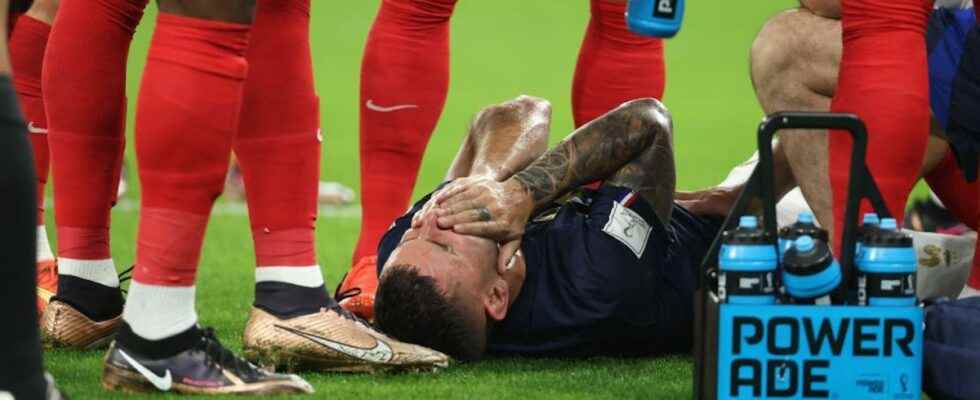Published on
Updated
Reading 2 mins.
Tuesday evening, Lucas Hernandez, defender of the French football team, left after only 9 minutes of the match, visibly suffering from the right knee. A rupture of the anterior cruciate ligament of the knee will keep him away from the pitch for several months.
The slaughter continues for the French football team, despite a first important victory against Australia (4-1) on Tuesday, November 22. After Karim Benzema, Golden Ball 2022, but victim of a thigh tear on the eve of the opening of the World Cup, it is defender Lucas Hernandez who must now withdraw for the rest of the championship. On an action at the start of the match, the footballer seriously injured his right knee. Immediately, Didier Deschamps, the coach of the Blues, had then expressed his concern: “He has to pass exams but it seems quite serious to me”, he had indicated on TF1. After examination indeed, the sentence fell, confirming the fear of the supporters and the staff: it is indeed the cruciate ligaments which are affected. A trauma that requires several months of care.
Rupture of the anterior cruciate ligament: what does this injury involve in an athlete?
The rupture of the anterior cruciate ligament, well known to athletes, is also feared, as it involves a long break in a season. As Dr. Roland Krzentowski, sports doctor, reminds us, a joint is made up of bones that are attached to each other by strings called ligaments, the stability of this joint is ensured by these ligaments, but also by the muscles. .
“At the knee, the anterior cruciate ligament is the main ligament in the stability of the knee, responsible for stability in rotational movements. When it’s broken, we’re like a chair that only has 4 legs, we’re unstable” he illustrates.
Consequently, the rupture of the ligament is incompatible with the practice of football, since it is precisely a sport at risk of instability, with changes of direction but also contact between players.
The diagnosis is usually quick and recognizable: “The perception of a crack, the sensation of instability when bearing down and swelling almost confirm the diagnosis” evokes the doctor. “The examination, an MRI, will demonstrate the laxity, that there is play between the bones”.
What is the planned treatment?
The treatment will depend in particular on the sports practice of the injured person. The specialist explains: “In people who never put themselves in a situation of instability, conservative treatment is considered, if the rupture is isolated“. This means that we can let things deflate, return to normal and that rehabilitation can then allow a normal social life, with the practice of sports activities such as cycling.
“In the case of an athlete, and in particular a footballer, surgery is necessary to continue his activity! It consists in redoing a ligament (the broken one cannot be repaired) by grafting in its place what may be around it: tendons, the quadriceps… We redo the ligament to stabilize the knee again”.
Then comes the time of rehabilitation to consolidate the knee, then that of re-athletics, to gradually put the athlete back in situations of play and instability.
A long road that Lucas Hernandez will have to follow to return to the field, this season, or the next. Athletes affected by a cruciate ligament rupture generally cannot hope to return for a period of 4 to 6 months.
